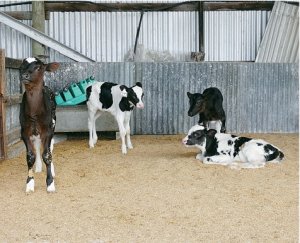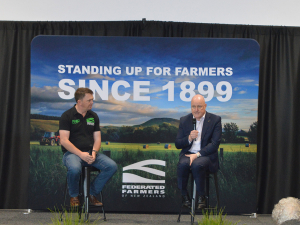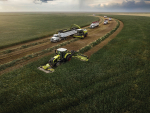Calf-rearing facilities and abilities vary widely on farms of all sizes, and in my experience, many of the calf-rearing facilities I see are less than ideal while some are grossly inadequate.
I have seen some outstanding results in poor facilities and some poor results in outstanding facilities, so clearly the human factor has an enormous impact on the success or failure of a calf-rearing enterprise.
There is a lot of science to rearing calves, including understanding the nutritional requirements, air quality and disease processes, but there is also an art to rearing calves.
The art is the intangible “sixth sense” that a compassionate calf rearer has.
It is the ability to detect a calf that is off-colour before it “crashes and burns” and taking the extra care to ensure that calves are always clean, dry and well fed.
I think that the “care factor” is one of, if not the most important factor in rearing success.
Ensuring adequate nutrient intake is another critical factor.
It is my belief that severely-restricting milk intake especially in the first three weeks of life in an attempt to drive early concentrate intake is actually counterproductive and malnutrition is a common cause of immune compromise and subsequently disease.
There is an increasing body of evidence to support the argument that really young calves cannot ingest (or digest) enough concentrate at one to two weeks of age to supply their critical energy needs if they are on a severely restricted milk intake.
Dairy vets are constantly called out to “sort out” a calf disease outbreak.
Here is the difficult truth: No drug that I can prescribe will overcome poor hygiene, malnutrition and poor air quality or cold wet calves living in squalid Third World conditions.
By using on-farm diagnostic tests like the AxCss-4 kits, rapid diagnosis of Rotavirus, Coronavirus, E coli and Cryptosporidium is now easy.
Early intervention to collect disagnostic samples from scouring calves and necropsy (post mortem) examination of calves which die provide valuable feedback to help us to identify the best prevention and treatment strategies.
Far too often, calf disease is treated in an almost random manner with little in the way of diagnosis or record keeping.
This increases the risk of violative antibiotic residues, failure to recognise the true incidence of calf disease and treatment failure, which is common when inappropriate treatment is given.
Accurately diagnosing the problem allows us to identify where the system has failed and where to target prevention and treatment strategies.
Your dairy vet is the best person to advise you on vaccination and calf biosecurity issues to control diseases like Johnes Disease and pestivirus.
The professional vet who is best qualified to provide unbiased scientifically verifiable advice on calf rearing is your experienced dairy veterinarian.
So with calving season fast approaching, call your vet now to book a visit and get some written protocols in place.
• Rob Bonanno is past president of the Australian Cattle Veterinarians Association and a director of the Shepparton Veterinary Clinic.
















